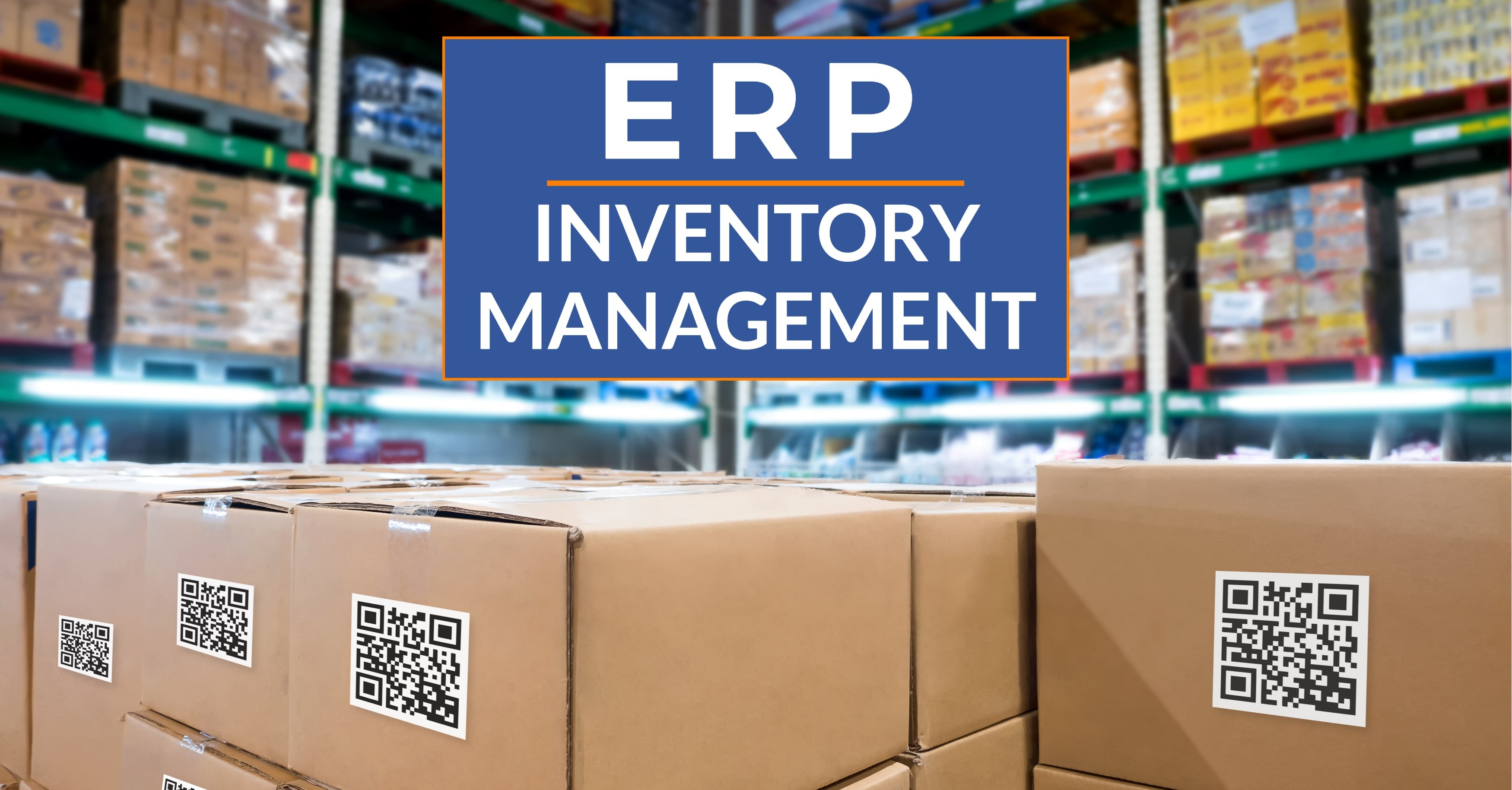3 Benefits of ERP for Inventory Management
Inventory management serves as one of the greatest challenges for discrete manufacturers. For example, Forbes estimates that four weeks of inventory for a manufacturer of heavy machinery could easily amount to $100 million. High storage costs, low turnover rates and waste resulting from inefficiently managed inventory can take a huge toll on your bottom line.
Enterprise resource planning (ERP) software could be the solution your business needs to maintain optimal stock levels. ERP includes inventory management modules designed to track materials, components and products throughout the supply chain. We’re going through the three benefits of managing inventory with ERP software.
1. Total Visibility
For most manufacturers, the biggest obstacle to inventory management is poor visibility. Visibility gaps can often be attributed to outdated, manual methodologies. 46% of small businesses either don’t track inventory or use a manual method, and several large companies also rely on spreadsheets and legacy applications to manage inventory. With data collected across multiple areas, your organization can’t achieve a total view of your inventory or effectively translate this information into actionable insights.
ERP lets manufacturers coalesce inventory and warehouse data and operations in a single solution, automatically delivering stock levels, product history and valuable inventory metrics to users. Additionally, ERP software can leverage information collected through RFID tags, barcodes, IoT sensors and other IDs to track materials and products in real time. Notifications will alert you of over- or under-stocking, so you can respond instantly to issues. Furthermore, lot and serial tracking as well as detailed audit trails allow you to maintain compliance with a large range of government and industry standards.
ERP also includes data analytics and reporting tools to improve inventory management strategies. AI and BI technology can create forecasts to help manufacturers accurately predict demand to avoid stockouts or excess carrying costs. Reports can summarize how each product is selling and identify process roadblocks across multiple warehouses. With 360-degree visibility, businesses can avoid costly errors and maintain optimal stock levels.
2. Greater Efficiency
Manually tracking inventory doesn’t just inhibit visibility. The time it takes to enter SKU codes, locations and other information across spreadsheets and applications crushes your company’s efficiency. This repetitive work hurts employee morale, as users dedicate time to mundane data entry instead of decision making. Furthermore, it results in costly mistakes. Human error has a huge impact on inventory fulfillment. When someone makes an incorrect data entry, you could be taking more time out of your schedule to resolve issues.
With ERP, data is automatically updated in one place. That allows authorized users across your enterprise to access crucial information without inputting data into multiple platforms. This frees up a lot more time and reduces human error. Additionally, with precise data at all times, you can ensure the right suppliers, materials and equipment are in place to keep up with customer demand. ERP can also automate tasks to streamline inventory management. For example, your software can instantly contact suppliers when it’s time to replenish materials.
3. Huge Savings
Without a solution that can track expenses and maintain accuracy, manufacturers find themselves leaking money in their inventory management practices. Inventory shortages, dead stock and poor inventory turnover rates are bound to occur if you can’t track stock or predict demand. This in turn damages customer relationships, as customers end up with late or incorrect orders. ERP’s real-time tracking, precise data and comprehensive analytics can help you maintain appropriate stock levels and avoid critical issues.
Additionally, the software helps you fully understand costs associated with inventory. Though it’s easy to view inventory cost per unit, this doesn’t give you a complete view of expenses. Epicor ERP gives users the ability to separately track material cost, material burden, subcontracting, labor and burden costing. It also maintains FIFO, average, lot, last and standard costs for each individual part master. With these granular metrics, you can find effective ways to lower costs and improve profit margins.
Wrap Up
ERP’s in-depth insights and process automation simplify inventory management and increase productivity. Epicor, a leading ERP vendor for manufacturing and distribution, designed its software to promote visibility and efficiency while reducing costs across your enterprise.
To optimize your inventory management strategies, team up with Datix. Datix is an Epicor Gold Partner that has been specializing in ERP software for over 20 years. Our certified consultants know how to make the most of each Epicor module to help your business elevate its performance.
Stop letting inventory management challenges hurt your bottom line. Contact Datix today to learn how to transform your business through software!
{{cta(‘770c1544-d87d-4acb-9fc4-7a25e1385094′,’justifycenter’)}}


